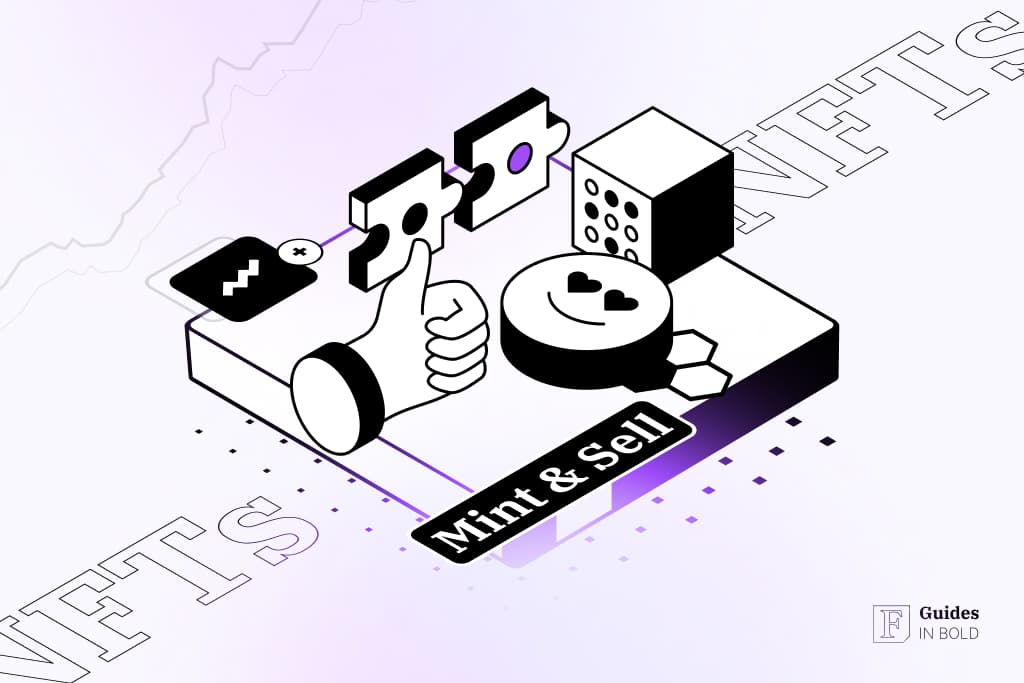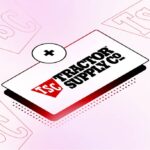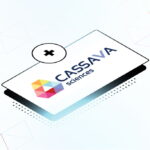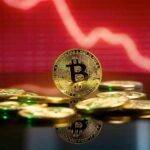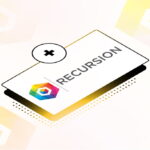Best Crypto Exchange for Intermediate Traders and Investors
-
Invest in 70+ cryptocurrencies and 3,000+ other assets including stocks and precious metals.
-
0% commission on stocks - buy in bulk or just a fraction from as little as $10. Other fees apply. For more information, visit etoro.com/trading/fees.
-
Copy top-performing traders in real time, automatically.
-
eToro USA is registered with FINRA for securities trading.
In this detailed manual, you will learn what NFTs are, how they work, how to mint and even sell them. They are revolutionizing ownership in an increasingly digital world.
What are non-fungible tokens?
Think of them as title deeds to a car or a piece of property. A title shows ownership of the vehicle, but it isn’t the car itself. Similarly, an NFT token holds the metadata about an asset. This could be the asset’s ownership properties, description, and provenance – the asset’s history.
NFTs exist on a blockchain, but the assets they represent may or may not exist on the blockchain. This means that NFTs can represent digital and physical assets, from concert tickets and baseball cards to online in-game virtual assets.
Watch the video: What’s an NFT? Explained by Layah Heilpern
A Primer on Fungibility
An essential aspect of NFTs is the property of fungibility. Fungibility is the degree of similarity between two items. A fungible item lacks uniqueness and can be easily replaced by another identical item. Take, for instance, banknotes. A hundred-dollar bill holds the same value as the next hundred-dollar bill, and the two can replace each other.
On the other hand, non-fungible items are provably unique. For instance, two plane tickets may look similar, but they are not the same. You can’t replace one with another as they represent different seats. Similar to event tickets or property titles.
NFTs have only borrowed the same concept of non-fungibility and applied it to the blockchain, which helps lend properties of immutability and permanence to these non-fungible items.
Best Crypto Exchange for Intermediate Traders and Investors
-
Invest in 70+ cryptocurrencies and 3,000+ other assets including stocks and precious metals.
-
0% commission on stocks - buy in bulk or just a fraction from as little as $10. Other fees apply. For more information, visit etoro.com/trading/fees.
-
Copy top-performing traders in real time, automatically.
-
eToro USA is registered with FINRA for securities trading.
NFT token properties
Non-fungible tokens are created with multiple properties giving them the uniqueness and verifiable authenticity that define their value. The unique properties are:
Scarcity
When minting an NFT token, the creator can create one copy of the token or multiple copies. This is akin to a ticket company creating both high and low-value tickets to a concert. The company can intentionally make limited numbers of the high-value tickets and create several low-value tickets. This way, they control the scarcity of the tickets and, to some level, the desirability of the high-value tickets.
Similarly, a digital artist minting an NFT token can deliberately control the scarcity of their art by controlling the number of tokens minted.
Ownership, authenticity, and provenance
The biggest problem that artists and collectors face is proving the originality and provenance of pieces of art. A painter may not have a way of ensuring that their painting’s story is passed on to subsequent owners of a particular piece they create.
NFTs solve this problem using blockchain technology. During the NFT minting process, the creator can include as many details about the piece as possible. Given that most NFTs are minted on public digital ledgers such as Ethereum, it is now easier to prove a given art’s originality and ownership.
Liquidity
Liquidity is the measure of how easy it is to convert an asset into spendable cash. NFTs, being digital assets, are inherently much easier to trade compared to physical items. However, they do stretch the concept of liquidity a little further.
Given that NFTs are designed with interoperability in mind, they can easily be created on one platform and traded on multiple marketplaces. Having access to numerous global markets also means more potential buyers for an NFT token than traditional assets.
Standardization
Most digital assets such as conventional images, photos, and art may lack this property. However, the good news is that NFTs are created based on preset standards depending on the blockchain hosting the NFT.
For instance, Ethereum, currently the most popular smart contract platform allowing the minting of NFT tokens, supports several NFT creation standards such as ERC721 and ERC1155. The idea of standardizing token creation also helps with interoperability which we discussed above. By adhering to popular standards, most NFTs can be supported across multiple platforms, including digital wallets and virtual showrooms.
How non-fungible tokens work
NFTs are a new way to prove ownership of an asset digitally, and therefore, the idea is still developing and improving as more applications are discovered. In the next section, we will highlight some of the popular applications of NFTs so far.
Non-fungible tokens run on top of smart contracts, and these are supported on specialized blockchains. The most popular smart contract blockchain is Ethereum. Consequently, it has become the more popular platform on which to issue and mint NFTs. Its core developers have integrated several NFT minting standards, including ERC 721, 1155, 994, 809, 1201, and 998. The various standards allow for the creation of diverse tokens.
Watch the video:How Non-Fungible Tokens Work
Other less popular smart contract platforms that support NFT creation are EOS, Tron, NEO, and Binance Smart Chain.
It’s worth remembering that NFTs are separate from the digital assets that they represent. They are valuable because they store information about the digital asset in an authentic and easily provable way. Similar to how a car or property title is not the property itself. The metadata that NFTs hold include the description of the asset, the price, the creation and ownership, implementation features such as royalties, and often links to the location of the asset they represent.
Once an NFT has been minted (created), the owner can proceed to sell it on a marketplace such as OpenSea, Rarible, Nifty Gateway, among others. It can also be exchanged peer-to-peer without using a marketplace.
The copy and paste problem
A common criticism of non-fungible tokens is that they do not solve the digital duplication problem. An image on the internet can be copied and downloaded unlimited times by anyone, and NFTs cannot stop or help stop this.
In any case, NFT proponents argue that the more a digital file is duplicated and downloaded, the more popular and valuable the original copy becomes.
Non-fungible token applications
As mentioned before, the idea of NFTs is still a novel concept, and therefore its applications are also expanding. But, NFTs have seen tremendous success in a few notable industries. Here are some of them:
Collectibles
Collectibles are rare and precious items. In the physical world, collectibles include classic cars, artifacts, paintings, and generally museum-worthy items.
When it comes to the digital space, collectibles can range from conventional items such as images, pictures, and music files to more contemporary items such as 3D models, online gaming merchandise, virtual properties, and domain names.
With NFTs, you can virtually tokenize anything of value, whether or not it is tangible.
The collectibles use-case has become the most popular application of NFTs so far, allowing digital artists to tokenize and quickly sell their artwork online. Initially, artists were only in control of their art when they sold it to the initial buyer. However, any other subsequent sale was out of their hands. Using NFTs, artists can now track the performance of their work on secondary markets as well as profit from these sales through royalties.
Back in October 2017, a new kind of game called CryptoKitties (CK) was launched. CK is a crypto-collectibles game built on the Ethereum blockchain that allows players to buy, sell and breed virtual cats for fun. It was the first NFT application to gain significant traction. The game got so popular that it almost crashed the Ethereum blockchain.
Online gaming
Gaming is a multi-billion dollar industry thanks to vibrant in-game economies and a growing interest in the sector from outsiders. NFTs are exponentially becoming assets of interest, especially to game developers looking to supercharge the within-game economies.
NFTs help gamers prove ownership of earned and bought props and tools within the games. With the provable ownership properties, they can buy, sell and trade the merchandise with other gamers.
Previously, in-game economies were limited to just the local gaming environments. However, NFTs allow for expanding these localized economies to other secondary marketplaces allowing for the trading of gaming merchandise without even interacting with the games.
One such game that takes particular advantage of this feature is the crypto-collectible card game Gods Unchained.
Domain names
Domain names have value, whether it be in the conventional digital world or the blockchain. Domain names help disguise IP addresses that are difficult to remember. However, this use case has become even more valuable in the blockchain world.
The Ethereum Name Service, which launched in 2017, created a way for Ethereum account holders to disguise the strings of characters that represented their wallets’ public keys into easy-to-read names such as myname.eth. Using such a name can make it easier to share wallet addresses for payment and value exchange purposes.
In 2019, the ENS was ported over to the ERC-721 standard, meaning that ENS domains could now be traded similar to other assets on NFT marketplaces. Additionally, digital collectors had access to another avenue to collect valuable domains to their portfolios.
Unstoppable Domains is another blockchain-based domain name service running on top of the Zilliqa network. The service allows for the creation of ERC-721 compliant CNS domains that can then be traded on NFT marketplaces.
Decentralized Finance (DeFI)
DeFi is a new way to interact with financial applications without using centralized parties such as banks, funds, and conventional financial players. DeFi takes advantage of the smart contracts hosted on blockchains such as Ethereum to facilitate financial transactions for financial instruments such as loans, savings. Investments and insurance, among others.
Using securities to acquire financing is a common practice in traditional finance, and this has been adopted for the blockchain world. However, the items used for collateral may differ. Initially, these were other crypto assets. For instance, someone would use their collection of ETH coins as security for a DAI loan.
Over time, more items have been included as collateral-worthy assets, and these include NFTs such as art, domain names, and any valuable collectibles.
Another way DeFi has been applied to the NFT space is the use of fractional ownership of assets. It is possible to share in the ownership of a collectible jointly. An excellent example of this is the Metapurse fund created by the winner of the Beeple art auction we highlighted at the start of this post.
Metapurse owns various NFT assets, including art and virtual land, on Decentraland and Cryptovoxels. These properties have been bundled up and tokenized for sale allowing investors to co-own pieces of the assets.
Watch the video: NFT Digital Art Explained
How to mint (create) a non-fungible token
This section will show you how to mint your first NFT using the popular Rarible marketplace. The exact steps to take may be different from platform to platform, but the process is similar. So here are the six simple steps on how to do it.
- Step 1 – Create and load your Ethereum wallet;
- Step 2 – Connect the wallet to Rarible;
- Step 3 – Prepare your art (or item you wish to tokenize on the blockchain);
- Step 4 – Add description details of the item;
- Step 5 – Pay fees and upload;
- Step 6 – List it in Marketplace.
Let’s look into each of these steps in more detail.
Step 1 – Create your wallet
The digital wallet you create will depend on which blockchain you wish to list your NFT. In our example, we will use the popular Ethereum network.
There are several wallets that can help you store your NFT safely, and we have explained how to choose a wallet and some of the best options in the market here. For this purpose, we recommend going with a web wallet that integrates with your browser through an extension which makes it easier to connect to an NFT marketplace.
Popular web wallets include MetaMask, MyEtherWallet (MEW), among others.

Once you pick your wallet of choice, create an account (address) and secure your private keys.
Before we continue, we need to have some Ether coins in the wallet. These will be used to pay for the minting fees. There’s no standard figure for minting an NFT token. The total cost of minting will depend on the network gas fees when you submit your transaction.
To avoid loading inadequate funds, make sure you research the current minting fees in the marketplace to have an idea of how much you will need. You can’t get the exact figure since the costs vary depending on the size of the data that need to be written to the blockchain and how much you’re willing to offer to miners to validate your transaction.
Depending on which wallet you choose, you may have the option to buy Ethereum directly through the wallet interface or send the ETH from a third-party wallet.
Step 2 – Connect the wallet to Rarible
Now that you have your wallet all set up and ready to go, head on over to Rarible (or any other wallet-supported NFTs marketplace) and connect your wallet. Rarible automatically creates an account once you connect your wallet, and every time you visit the website, you will need to connect to your Ether wallet. Your Rarible account is linked to your wallet.
On the top right side of the Rarible homepage is a ‘Connect’ button. Click on it to link to your wallet.

The screen above will appear. If the wallet you’re using is listed on the dialog box above, go ahead and select it. Otherwise, select ‘WalletConnect,’ which will display a QR code to scan with your wallet.
Once you scan the code, Rarible will automatically create an account associated with the wallet address you use. Do not lose the wallet’s private keys, as this means that you will also lose access to your Rarible account.
At this point, your accounts are now set up, and we can start creating our NFT token.
Step 3 – Prepare your art (or the item you wish to tokenize)
Before we proceed, you need to have the item you want to tokenize ready to be uploaded. This can be almost any digital file. For instance, if it’s art, you can prepare the JPG, JPEG, PNG, GIF, etc., file formats. For music, it could be MP3, AAC, FLAC, or WAV, among other formats.
If you do not have a file, you have to create one and make sure you have the proper copyright permissions to use the file. You could take a photo or the tangible art you want to tokenize, such as a painting.
Remember, an NFT is not the item itself but rather a representation of the item.
Given that the blockchain will likely store the NFT token for a very long time, you also want to make sure that the item being represented is well kept. It makes sense to store the companion digital file in a blockchain such as an IPFS system.
Using centralized options such as cloud services may be reckless and risky to the security of the file. Ideally, you could store the file in a temporary storage service such as Google Drive, but this may not be an appropriate long-term storage solution for a tokenized item.
Step 4 – Add description details to the NFT token
Head back to Rarible and click on the ‘Create Collectible’ button found in the top right corner after logging in with your wallet details.

The above dialog box will appear, prompting you to choose between the two options. A single collectible means a one of one (1/1) copy of your collectible. The ‘multiple’ option allows you to create several copies of your NFT. You could still make a limited number of copies of your token with the ‘multiple’ choice.
Next, Rarible will prompt you to describe your token. Add a token name, description, price, and other metadata.

You’ll notice a section for royalties on the above image. That is the option where you include a percentage of royalties due to you as the creator of the NFT whenever it is resold in the future.
There is also a prompt to upload the file to represent the item. Think of this as a thumbnail for your NFT whenever it is displayed on the marketplace. There is also the option to include a link to a higher resolution or higher quality file to be unlocked after the buyer completes the purchase. This will be the actual file that the token will represent.
Step 5 – Pay fees and upload
This is the easiest part. Once you click on the ‘Create Item’ button on the description dialog box, Rarible will send a fund request to your wallet. Within this request, you will see the network gas fees at the time of the request and the amount it would cost to mint the token to the blockchain.
You can make changes to your gas cost to dictate the urgency of your transaction. A higher figure will see your transaction confirmed faster than when you use a lower gas cost figure. Adjust this accordingly. Otherwise, if you are happy with the figures quoted by your wallet, approve the payment.
You have now minted your NFT token, and you can view it on your Rarible collections page or in your wallet using a blockchain explorer.
Step 6 – List your NFT for sale on the Marketplace
There’s the option to list the NFT for sale on the marketplace immediately in the description step above. You can choose to put it up for auction or list it with an instant sale price. The choice is yours.
If, on the other hand, you prefer to keep your NFT private, you can uncheck both options. To list the token manually later, you will have to locate it within the Collections tab on your Rarible profile, click on it, and then list it.

In the image above, you can see some of the categories available for listing your token (art, photography, games). Choose a category that best fits your art. This is important since most buyers use the filters provided to find interesting items to purchase. You want your art to be found.
Finally, promotion is key to making the sale. Actively push your art on social media and cultivate a community of fans to which you will be promoting and selling your work.
What the video: Video: How to turn your art into an NFT – Step by Step Tutorial
Popular NFT Marketplaces
We have focused on Rarible above, but there are many alternatives to consider when choosing a solid platform to list your NFT. Here’s a list of some of the most popular NFT platforms:
- Rarible;
- OpenSea;
- SuperRare;
- Binance NFT Marketplace;
- Zora;
- Nifty Gateway;
- Foundation;
- Terra Virtua;
- Axie Marketplace;
- Async Art;
- NFT ShowRoom;
- Makersplace;
Watch the video: Video: Top Crypto Art Platforms – Reviewed by an Artist
Conclusion
There you go. You made it to the end of the NFT manual. We hope you now understand what NFTs are and why they are valuable assets. In the text, we discussed some of the properties of NFT tokens, how they work, how they are different from other blockchain tokens, and their use cases so far.
In the later sections, we showed you how to create (or mint) your non-fungible token using the popular marketplace Rarible and its alternatives to consider.
Hopefully, you are now able to mint your own NFT token and sell it on the marketplace. Good luck!
Disclaimer: The content on this site should not be considered investment advice. Investing is speculative. When investing, your capital is at risk.
Non-Fungible Tokens | FAQs
What is a Non-Fungible Token (NFT)?
NFT stands for non-fungible token. This is a digital asset created on a blockchain that proves the ownership and provenance of an item. Consider it a digital certificate whose authenticity can be easily verified on the blockchain.
How do Non-Fungible Tokens (NFTs) work?
NFTs store metadata about a valuable item such as art on the blockchain. Components of this metadata could include the owner, creator of the item, the specifications, and the item’s history.
How do I buy Non-Fungible Tokens (NFTs)?
NFTs can be bought in several ways, including peer-to-peer but the most common is through an NFT marketplace such as Rarible. To use a marketplace, follow the following steps:
- Create a digital wallet, e.g., Ether wallet, to purchase NFTs minted on the Ethereum blockchain;
- Load the wallet with funds;
- Connect the wallet to an NFT marketplace;
- Search for a preferred NFT on the marketplace and click to buy it;
- Authorize payment on the wallet prompt.
How do I create a Non-Fungible token (NFTs)?
NFT is a way to store metadata about a digital file or physical item on the blockchain. Here are the simplified steps to create (or mint) an NFT:
- Create a digital wallet;
- Connect the wallet to an NFT platform such as OpenSea or Rarible;
- Sign in and proceed to create a collectible;
- Provide details of the NFT such as title, creator, owner, price, and description;
- Authorize payment of minting fees to the blockchain;
- List the NFT on the marketplace.

